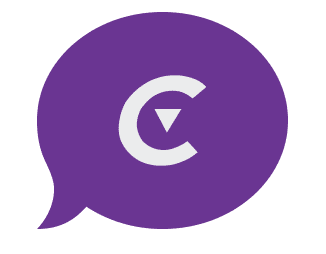Robocalls in the US have decreased. Billions of calls are placed on a monthly but that doesn’t mean they’re letting up. In April 2023 alone, over 5 billion robocalls were placed.
In response to the continued nuisance of unwanted calls, carriers remain in an aggressive stance in their attempts to address robocalls. Legitimate businesses continue to have their phone numbers marked as Spam Risk or Scam Likely, sometimes even before a new number has even been dialed.
As a result, contact and conversion rates are suffering.
Use this guide to better understand why your phone numbers are marked as spam—and what you can do about it. Below, we cover:
- How phone numbers get marked as spam risk
- Why some new caller IDs might already be flagged
- How to help stop your numbers from being marked as spam in the first place
Why Is My Phone Number Marked as Spam Risk or Scam Likely?
To address call flagging, it’s important to first understand how providers are marking phone numbers as a “spam risk” or blocking them altogether, ruining your caller id reputation and affecting your business growth.
When the FCC instituted regulations like STIR/SHAKEN, they placed much of the burden for rooting out spam calls on the shoulders of telecom carriers.
As a result, major telco carriers each use their own set of complicated algorithms to determine whether or not a number is likely to be spam. There’s little transparency around these algorithms, and they are frequently being updated.
The most common reasons that numbers are marked as Spam or Scam Likely include:
- Call recipients manually label a call as spam
- Inconsistent call volume from a given phone number
- A high number of short calls, i.e., just a few seconds long
- Large spikes in call volume, such as suddenly making 100 calls within an hour from just one number
- A large portion of calls go straight to voicemail
- Dialing the same number multiple times consecutively, or too many times on the same day
The Ultimate Checklist
TCPA compliance checklist for your call center
Industries Face Adverse Effects of Labeled Calls—and Little Recourse
Nevertheless, carriers’ aggressive practices, which rely on algorithms and not human intervention, have aggravated an industry-wide problem.
According to the FCC, a number of industry groups have reported experiences of adverse effects, as blocking and flagging impede their ability to reach customers and prospects who have provided their express written consent to be contacted.
In the debt collections industry, for example, 78% of businesses said they’d had calls blocked, and 74% said their calls were being mislabelled as spam.
Businesses Have Few Options to Respond Once Numbers Are Marked
To make matters worse, they also reported that carriers are slow to react (or even non-responsive) when it comes to rectifying issues related to improperly blocking or labeling calls as spam.
Meanwhile, existing statutes leave legitimate businesses stuck between a rock and a hard place, with few options for taking action: Due to safe harbor laws instituted under the Pallone-Thune TRACED Act of 2019, carriers are shielded from any liability if they flag or block legitimate numbers.
Why Are Some New Phone Numbers Already Flagged as Spam or Scam Likely?
In this environment, clean caller IDs are in higher demand than ever before, especially in popular area codes.
Thanks to the carriers’ aggressive tactics, legitimate businesses are cycling through phone numbers at a quicker pace. And with everyone on the hunt for clean, rested DIDs, it’s become increasingly challenging to obtain them.
Meanwhile, the problem of spoofed caller IDs has become so pervasive that even supposedly rested DIDs are not safe. Although number providers are resting numbers for up to 90 days, those numbers may still be used by the illegal spoofers during the rest period.
When this illegal activity isn’t identified by carriers, new numbers purchased by call centers may already be marked as spam.
The Convoso Product and Engineering teams proactively monitor activity in order to quickly identify algorithm changes. This way, we can quickly adapt to these changes, and minimize the risk of your calls being labeled incorrectly.
So, how do I stop my numbers from showing up as spam?
Once a number is marked as spam or scam likely, the best thing to do is rest that number for a period of weeks. And although it’s unclear how successful this may be, you can submit a request with major carriers at the following links:
Additionally, you can register your numbers with the Free Caller Registry. However, to proactively avoid having numbers marked as spam in the first place, implement the following strategies in your outbound lead generation campaigns.
1. Dial Smarter, Not Harder
Hammering away at your leads without being strategic is a recipe for disaster when it comes to call flagging and blocking.
Create dialing cadences that maximize the chance of consumers answering your calls, whether it be dialing at the right time of day, making the right number of attempts, and/or dropping voicemails at the right intervals.
2. Adapt to STIR/SHAKEN Standards
The major carriers have implemented the STIR/SHAKEN framework across their networks with just a few limited exceptions. Higher attestation levels (particularly A) will reduce the likelihood of numbers being flagged or blocked.
3. Utilize the Right Number of DIDs
Placing over 100 calls per day per phone number is one of the quickest ways a number gets flagged or blocked.
Before dialing into an area code, make sure you have enough DIDs in that area code to ensure you are placing no more than 100 daily calls per number—and much fewer, whenever possible.
In some cases, it may be difficult to acquire the right amount of phone numbers in each area code, but you can take advantage of numbers from adjacent area codes as well. For example, if you are calling into Chicago and can’t buy enough 630 numbers, you could buy 847 numbers as well, which would be recognized as a local area code.
4. Use Omnichannel Outreach
Not all interactions require a call. Consider using SMS and email communications in addition to your dialing efforts, which increase the likelihood of prospects answering calls and may reduce the number of attempts needed to reach them.
5. Increase Speed to Lead
Getting to your leads quicker improves the likelihood of calls being answered. So make sure your high intent and competitive leads go to the front of your predictive dialer’s software queue.
When dialing your best leads first, you’ll significantly increase the chance of a sale.
This also ensures calls associated with your best campaigns are being answered. And when your calls are being answered, your numbers are less likely to be blocked.
6. Adhere to TCPA and State/Local Guidelines
Scrub your lists against do not call lists and be sure to adhere to relevant dialing regulations to avoid consumer complaints. Dynamic scripting software can help ensure agents read proper disclosures and uphold compliant conversations.
The Ultimate Checklist
TCPA compliance checklist for your call center
Partnering with the Right Dialer Provider
With the challenges of operating a call center environment with sales and lead generation agents making hundreds or thousands of calls to consumers, having the right dialer partner can make all the difference. At Convoso, we keep compliance support front and center to help keep our partners safe and drive high performance, even amid constantly changing conditions.
We’ve seen how the increase in call blocking and flagging presents a serious challenge to the entire industry. When a caller ID says “spam” or “scam likely” your chances of connecting with a customer drop drastically.
Convoso has responded to this situation with an effective tool: Using Convoso’s ClearCallerID™, your call center can bring a new level of transparency to its caller ID reputation management. With the ability to quickly identify flagged and blocked numbers—whether they’re new or old—down to the carrier level, call centers can swap them out before they do harm to critical KPIs.
Learn how you can tackle drive higher contact rates and increase sales. Schedule a demo.
Schedule a Demo
DISCLAIMER: The information on this page, and related links, is provided for general education purposes only and is not legal advice. Convoso does not guarantee the accuracy or appropriateness of this information to your situation. You are solely responsible for using Convoso’s services in a legally compliant way and should consult your legal counsel for compliance advice. Any quotes are solely the views of the quoted person and do not necessarily reflect the views or opinions of Convoso.



